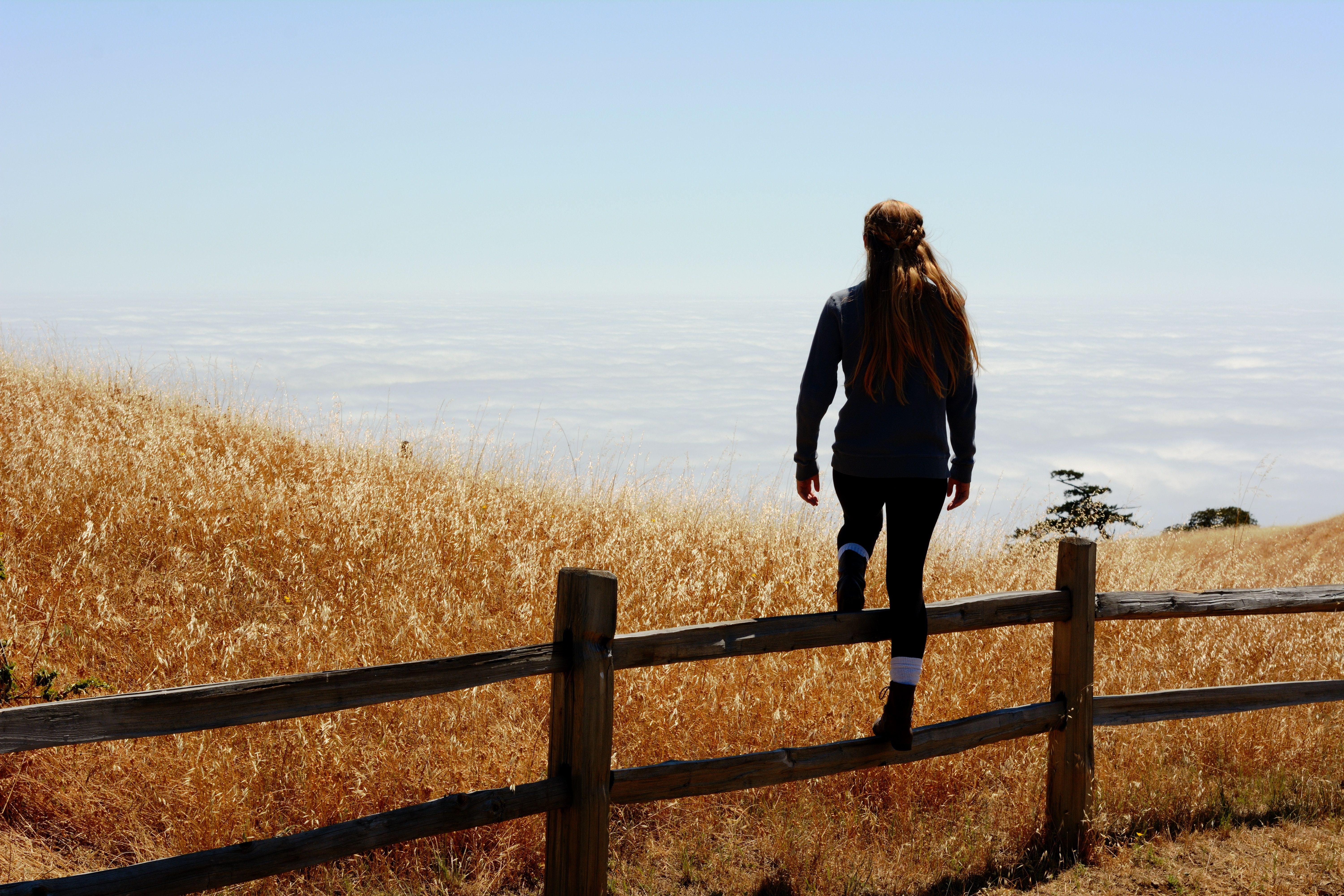Bearings
Don't Fence Us In!
And Other Lessons Learned from the Real Lives of College Students
By Nick Nagy
June 2018 Issue

Do this. Don’t do that. Spend your time this way. Pray this way. Believe this. Reject that.
This is the kind of rigidity that young people like me cannot stand when it comes to religion. We just don’t get it. Indeed, although many would probably not say so outright, my hunch is that there is an underlying assumption among the increasing population of nonreligious young people that religion is just a waste of time. Is there anything people in ministry can do to creatively challenge young adults’ growing frustration with and indifference to religion?
This past quarter, I was an undergraduate teaching assistant for a religion class titled “Exploring Living Religion” at Santa Clara University. I noticed some trends among the students I worked with as we visited local religious sites to learn about how different groups practiced their faith. These trends might provide some insight to churches.
During the course, we visited a Sikh Gurdwara, two different Buddhist communities, and did a contemplative hike in a regional park filled with majestic redwoods and waterfalls. Another group in the class visited a center for Kriya Yoga spirituality, a Hindu temple, yet another Buddhist community, and did meditation at a wetlands preserve on the edge of the San Francisco Bay. Sounds cool, right?
Young adults are engaged by novelty and joy, as when they got to participate in a spring festival at the Sikh Gurdwara in San Jose, CA.
To me it was. I’m a religion and political science major. But almost nobody else was initially into to doing this, and this was especially true on the first of four visits required for the class. There I was, all excited about getting to explore new places and witness diverse religious traditions and customs. But the students I was guiding were hesitant and reserved. It was clear they were reluctant because the field trips were something that they were being made to do. They had no choice. And I can assure you, choice is a big deal for my peers and me.
Most of the trips were on Sundays, and students were exhausted from the week prior, and anxious about approaching due dates in the week ahead. This relates to the way in which young people experience religion in general: as yet another pull on their time. As someone interested in the study of religion, my curiosity is piqued by visits to different religious sites. But many students at my school resent having to take three religion courses when their majors are engineering or business. They don’t get how it connects to their needs, or anybody else’s for that matter, so they don’t want to spend time on it.
Still, I believe most the students in my class found visits to diverse religious communities and sites to be enlightening and worthwhile. This was in part because they saw ways in which religion can sustain communities and bring good into the world. For example, on our visit to a Sikh Gurdwara in San Jose, students learned about and joined in the tradition of the langar, a 24/7 community kitchen in which anyone is welcome to a meal. Everyone sits together to eat on the floor, expressing Sikh values of solidarity and equality. Although it was an unusual experience for many of the students, it was nonetheless a place where students felt comfortable and supported. The langar experience made the values of Sikhs real for us, and it made us feel welcomed and cared for. Churches need more of this—more ways to show young people that the community is on their side and that they care. Many young people are tired of hearing that if they believe this or that, then that alone will help them. We want to see care in action.
There are lots of ways that the reality of young adults’ lives can be enriched by engagement with religions. They just don’t know it. For instance, growing up in a world full of technology, where there are so many choices for what to do from one minute to the next, young people are both overwhelmed and excited by the menu of possibilities. This presents churches and other religious groups with an opportunity to meet us at both of these emotional junctures to offer support. To help young people stay calm in the midst of a media saturated world, and in the midst of overwhelming pressure to succeed, churches need to be places where young people can seek refuge from social pressures.
To engage young people’s excitement, churches need to find ways to make themselves more interesting by introducing and accepting new and fresh ideas while also sharing their traditions. Show us your truth. Show us how it works for you and how it brings benefit to your life and the lives of others. Show us how religion invites exploration of the self in relation to the world and how it promotes valuing community.
Likewise, many young people are primed to chase careers that will provide us with an adequate income. But we also worry about whether we will be happy in those careers. Some of us do try to start down career paths we feel interested in and passionate enough about to do for the rest of our lives. But then we worry about not making enough money. Either way, it seems like anxiety is a given for me and my college friends. We often struggle with how to deal with this, and we are typically reluctant to turn to religion. What we experienced at the Sikh Gurdwara was that religion can support us on life’s journey physically, emotionally, and spiritually.
Another thing that surprised students on our visits was the Sikhs’ openness to different ideas and to interreligious dialogue. The students I went with were particularly drawn to the idea in Sikhism that different religions are just alternate paths to the same source of salvation. This progressive stance on faith is what young people crave, especially in a postmodern world where agnosticism seems to be the default precisely because it allows for intellectual openness. Young people want to ponder the questions; they don’t want to be spoon-fed the answers when they are already coming in with skepticism and doubt.
Young people don’t often see religion in this welcoming way. Many of my peers feel that if they weren’t raised in a certain faith tradition, they cannot connect to it easily. They feel excluded from the community, unfamiliar with its particular idioms—the secret handshakes of Catholicism, Congregationalism, or Lutheranism.
Many of us also feel that we can’t be comfortable in an environment where people who may not share in our perspectives surround us. This is not because we want everyone to believe exactly the same things, but rather because we worry that if we speak our minds or ask questions we might offend, upset, or incite an argument. Churches need to show us that they are welcoming of new ideas, and that they are capable of creating spaces where people can be comfortable with disagreement, where one person doesn’t feel like they have to prove or convince others of their truth through back-and-forth arguments.
Young adults crave opportunities to unplug, decompress, and connect to the wonder of nature, as when they visited wetlands on the San Francisco Bay for a sunset meditation.
There were a few students in our class who expressed that they kind of wished that they had been raised in a religious tradition. They felt they were missing some aspect of their life or their cultural heritage by not having a religious community to take part in. When the Sikh community extended such a warm welcome, making it easy for students to join in the activities of the community on the day we visited, we all felt more connected to the tradition, more open to exploration.
Another thing worth noting is that young people want to be heard just as much as preachers or pastors want to be heard. Maybe more. What I learned in guiding students to different religious sites, all outside of the Christian tradition, was that students felt more comfortable the more they could freely speak and ask questions. When they didn’t feel like someone was trying to convince them of anything, they were more receptive to the messages of the faiths that they were encountering. So, proselytize less and listen more. (And, yes, I know most Bearings readers think of themselves as not heavily into proselytizing, but you’d be surprised what comes off as hard-sell religion to young adults.)
As a young person who enjoys the study of religion, I learned a lot traveling with peers who are less interested in religion. Young people aren’t sinful for favoring more progressive social views, and we’re not lazy or ungrateful for not going to church. We have busy, complicated, often very stressful lives that make it hard to know where and how religion would fit, and, most importantly, why.
But my field visits with students also showed me that we all don’t think religion is all bad or a waste of time. In fact, I would say that there is a deep yearning among both religious people and today’s young people to improve the world and to help one another. Of course there is disagreement over how to do it, but this is all the more reason we ought to listen and learn from one another through collaboration, not write each other off as ignorant and misguided.
Will this bring young people to churches in droves? Maybe not. Probably not. But it might begin to shift perceptions of and engagement with religion, changing the church itself as well as attitudes toward religion among future generations of young people that will follow me and my college peers.
Photo Credits:
Cover Image: Michael Rosner-Hyman, "Field, Person, Fence, and Grass." (Aug. 20th, 2015). Via Unsplash. CC2.0 license.
Inside Image 1: Nick Nagy, "Untitled." (Apr. 15th, 2018). Used by permission of the author.
Inside Image 2: Jason Josephson, "Untitled." (May 24th, 2018). Used by permission of the Living Religion Collaborative, Santa Clara University.


